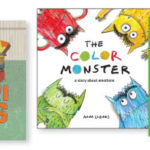Excerpt from an article in the New York Times https://www.nytimes.com/guides/well/mindfulness-for-children
By David Gelles Illustrations by Sam Kalda
Children of all ages can benefit from mindfulness, the simple practice of bringing a gentle, accepting attitude to the present moment. It can help parents and caregivers, too, by promoting happiness and relieving stress. Here, we offer basic tips for children and adults of all ages, as well as several activities that develop compassion, focus, curiosity and empathy. And remember, mindfulness can be fun.
Older Children
Children can benefit from mindfulness to adjust as they move through school — and start to experience a wider world.
In School
As children move through elementary and middle school, mindfulness can be a powerful tool, allowing them to deal with adversity more skillfully, and also enhance their understanding of the world and themselves. “Everything can be received and met with this kind curiosity,” said Ms. Morey. “That can then translate into their own self attitude, giving them space to figure out what they want to do with their lives and who they are.”
At this age, mindfulness practice can also help children in school. A recent study found that fourth and fifth graders who took a four-month meditation program demonstrated improvements in cognitive control, working memory and math test scores. Other studies have shown that mindfulness can be especially helpful to children with attention deficit hyperactivity disorder, and also reduce children’s aggression, anxiety and stress. And around the country, many educational institutions — from elementary schools to graduate programs — are bringing mindfulness training into the classroom.
Relieve the Pressure
Even with mindfulness, parenting can still be a challenge. As children experience the natural highs and lows that are part of growing up, it is all too easy — even natural — for the parent be buffeted by the child’s emotional roller coaster. But in time, mindfulness practice can relieve parents and caregivers from some of the pressure of identifying with every up or down the child experiences.
“That’s where this sense of not having strong grip on a sense of self is so important,” said Ms. Greenland. “Not only do they worry about the kids, but they worry that kids are a reflection on them. It gets conflated. If the kid is acting out or not going to Harvard, then the parent worries that that is a reflection on them.”
A simple exercise, known as R.A.I.N., can help us stay in the present moment and not get caught up clinging to the experiences of others, or our own emotions.
- R: Recognize. Acknowledge what is happening, just noting it in a calm and accepting manner.
- A: Accept. Allow life to be just as it is, without trying to change it right away, and without wishing it were different somehow.
- I: Investigate. See how it feels, whether it is making you upset or happy, giving you pleasure or pain, just note it.
- N: Non-Identification. Realize that the sensations you are feeling make for a fleeting experience, one that will soon pass. It isn’t who you are.
Additional Reading/Resources
Here’s a selection of our favorite books about mindfulness for kids and parents. Everyday Blessings: The Inner Work of Mindful Parenting
Authored by Myla Kabat-Zinn and her husband Jon, the founder of mindfulness based stress reduction, this is a comprehensive guide to mindful parenting.
Written by Ms. Greenland, this is a helpful guide for parents that includes techniques to help children develop mindfulness.
Created by Ms. Greenland and Ms. Harris, this activity card set was the inspiration for several exercises in this guide.
This book, written by Eline Snel, features exercises that can help children deal with anxiety, improve concentration and handle difficult emotions.
A Handful of Quiet: Happiness in Four Pebbles
Thich Nhat Hanh, a Zen monk, wrote this guide for parents who want to introduce their children to mindfulness and meditation.
A comprehensive guide to mindfulness for parents and children by Ms. Kim, this three-volume set includes a study guide for parents, lesson plans for children and an activity book.
About the Author
David Gelles is a reporter for The New York Times and author of “Mindful Work: How Meditation Is Changing Business From the Inside Out.” He has been practicing mindfulness and meditation for nearly 20 years.
Twitter: @dgelles




